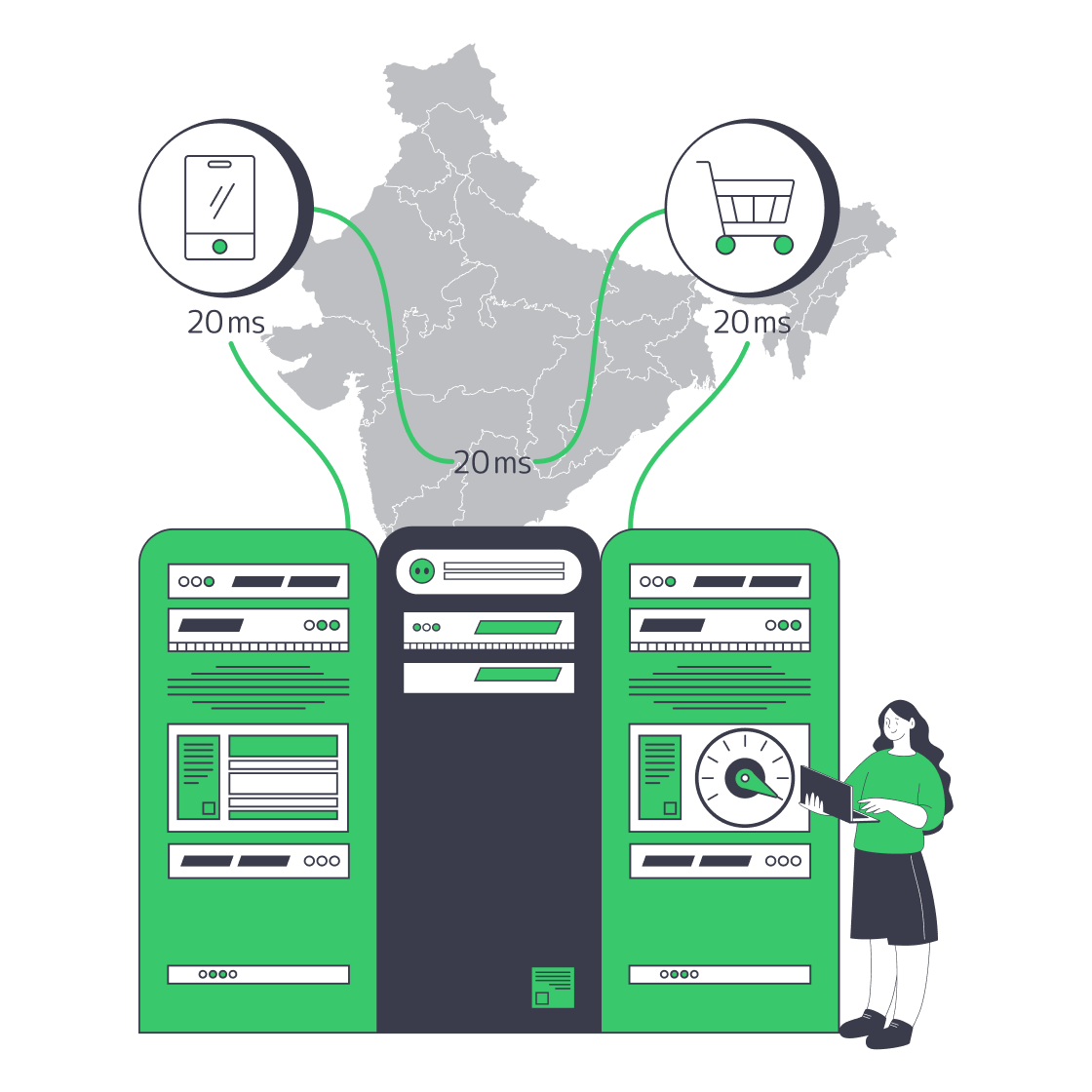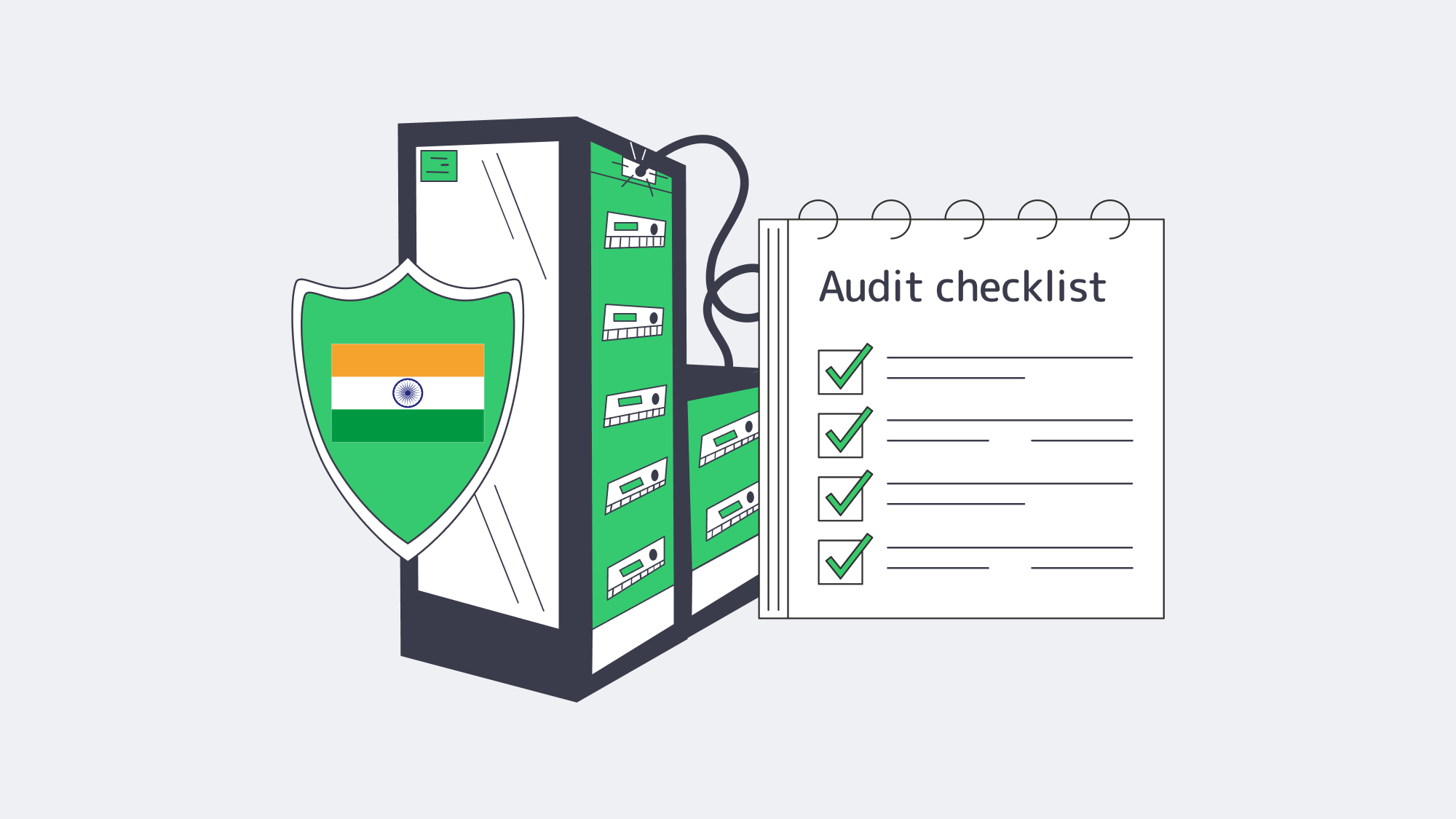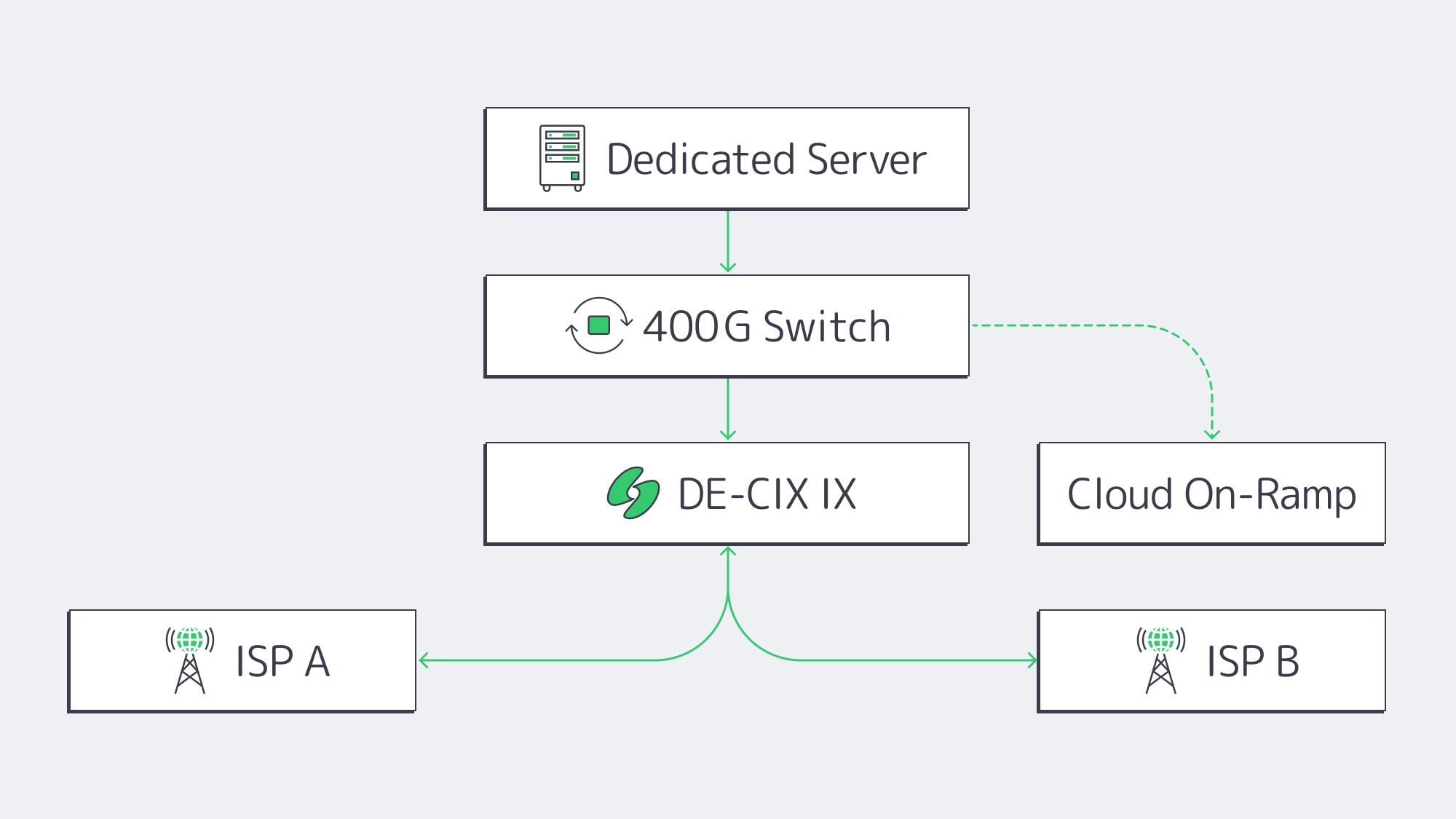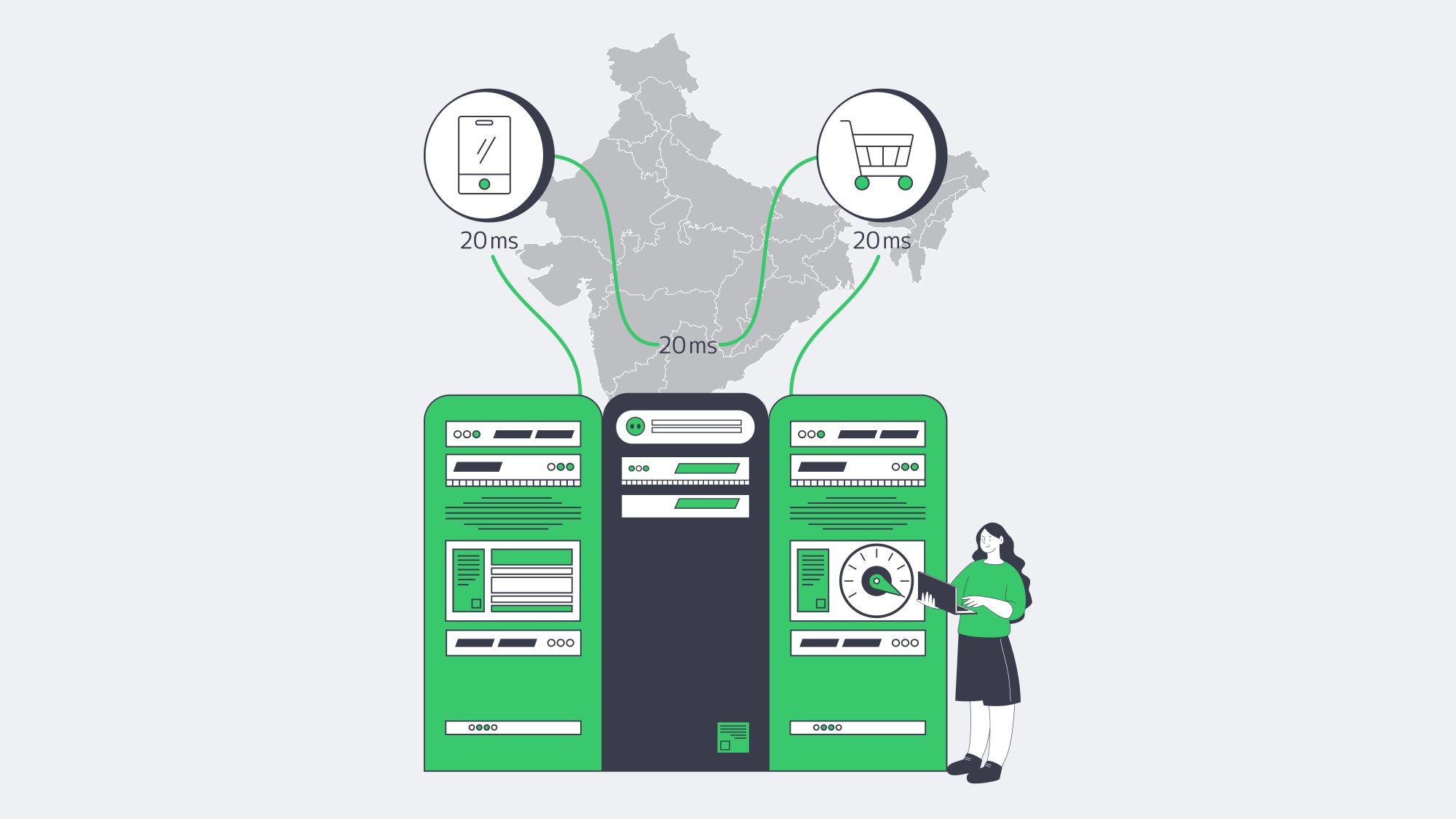Blog

Why Indian Dedicated Servers Slash Cart Abandonment
The Indian online retail market has surged to a gross merchandise value of $60 billion and is currently one of the top three markets by the number of customers worldwide. [1] Indian customers often use smartphones to complete purchases (81 per cent of all buyers do so). They can no longer tolerate slow websites. 60 percent of all shoppers will leave an application that takes more than 10 seconds to load.[2] Each millisecond counts: Amazon lost 1 % revenue with every additional 100 ms of latency [3], and Akamai recorded a 7 % decrease in conversions at the same level.[4]
Choose Melbicom— Dozens of ready-to-go servers — Tier III-certified DC in Mumbai — 55+ PoP CDN across 6 continents |
 |
An Indian dedicated server eliminates ocean distance, meets the new Indian privacy regime, and taps directly into metro areas that are retrofitting 400 GbE fabrics. We outline below the operationalized key dimensions that CTOs are currently calculating: performance, compliance, infrastructure depth, and peak-season resilience, and how Melbicom can assist in converting them into revenue.
Dedicated Server in India: Slashing Last-Mile Latency
When an Indian customer clicks a checkout button and the request is stopped in Europe or North America, the round-trip time often exceeds 150 ms.. Mumbai hosting reduces that to 20-50 ms, clearing the so-called last-mile drag that increases Time-to-First-Byte and, consequently, Largest Contentful Paint (LCP). The payoff is visible:
- Faster LCP & INP. Shorter transport means headers appear sooner, render-blocking scripts start sooner, and the main thread is done clearing sooner. 30–50 % LCP improvements have been documented by many Indian sites when origin servers are moved back to in-country.
- More predictable tails. Single-tenant hardware eliminates the contentious behavior of “noisy neighbors” on shared clouds, and thus its P95 and P99 latencies decrease in tandem with the average.
- Bandwidth headroom. Indian modern dedicated servers are typically shipped with 10G, 40G, or even 200Gbps bandwidth plans that should be sufficient for 4K product video or on-device AI inference streams.
Why dedicated server hosting in India beats distant clouds
The cloud regions outside India hide the latency of CDN edges but the API calls concerning carts, business logic and real-time inventory will always leave the local network. Proximity wins when the work involves the type of request where a request has revenue risk as with a checkout, payments, or personalization. In contrast with shared instances, dedicated servers keep kernel-to-NIC control in your control where its performance is capable of being optimized by the seconds by performance engineers with tuned TCP stacks or QUIC optimizations.
Meeting DPDP Act Compliance with Dedicated Server Hosting in India

The Digital Personal Data Protection Act (DPDP 2023) in India tightened the screws on international transfers: data can leave to a government-whitelisted set of nations, the so-called trusted nations; and contravention may lead to fines up to 250 crore (approximately US 30 million) or 2 % of global turnover, whichever is higher. [5] The easiest legal position an enterprise can take is to store and process within India when addresses, payment tokens, or behavioral profiles are concerned. A local dedicated server does that in a stroke:
- Data stays onshore. There is no Standard Contractual Clauses or risk assessment to all table replication jobs
- Audit-ready visibility. Physical control, in combination with logs within the same jurisdiction, reduces the number of regulator enquiries.
- Consumer trust. Surveys indicate that privacy is a higher priority for most Indian users when selecting a platform compared to price.
By hosting servers in ISO-27001 Indian Tier-III data centres, Melbicom provides needed paperwork to compliance groups without affecting performance.
Where Should You Deploy—Mumbai, Chennai, or Delhi-NCR?
India’s data-centre landscape has leap-frogged legacy constraints. Total installed IT load crossed 1,263 MW in April 2025—a 3.6 × jump since 2020—and is racing toward 4.5 GW by 2030.[6] Capacity is heavily concentrated in three metros [7]:
| City | Share of National Capacity | What It Means for Latency |
| Mumbai | 52 % | First hop for 14 subsea cables; dominates west-coast traffic |
| Chennai | 21 % | Fast east-bound routes to SEA and Singapore |
| Delhi-NCR | 9 % | Northern edge close to government and banking hubs |
Unlike a decade ago, when diesel backups and brownouts scared CIOs, today’s facilities carry dual grid feeds, N+N UPS, and 99.98 % design uptime. Redundant fiber rings and carrier-neutral meet-me rooms allow tenants to multi-home without leaving the building.
Capacity trajectory
| Year | Installed Capacity (MW) |
| 2019 | 350 |
| 2024 | 1 ,030 |
| 2025 | 1 ,263 [7] |
| 2027 (est.) | 1 ,800 [8] |
| 2030 (est.) | 4 ,500 |
Growth is propelled by AI workloads, and hyperscalers alone have pre-committed ≈ 800 MW for new GPU clusters and by e-commerce platforms localizing under DPDP. For CTOs, that means plentiful rack space, competitive pricing, and carrier diversity in every major zone.
400 G Peering Fabrics Power AI-Rich Commerce

Closeness is irrelevant where the packets stack up at choke points. The leading IXPs in India are rectifying that. In 2023, DE-CIX Mumbai expanded to 400 GbE access ports and achieved a peak of 1.5 Tbps, representing a 32% yearly increase. [9] NIXI is undertaking similar upgrade programs on its nodes across the country. The working result is this:
- Sub-10 ms paths across the metro among servers, ISPs, and CDNs that play a critical role in edge inference, live video or AR try-ons.
- Cloud on-ramps within the same facility, meaning that hybrid environments can burst to AWS or Azure, without heading out to the public internet.
- A cheaper price for transit. Dense peering both cuts the cost curve of bandwidth and enables competitive, low-priced dedicated server hosting in India without compromising throughput.
How to Prepare Dedicated Servers in India for Traffic Spikes
Diwali, Navratri, Big Billion Days— the 60-day festival pipeline is now responsible for 35 % to 40% of the annual retail sales [10] and it regularly drives internal traffic 5-10x higher than normal. The 99.9 % uptime guarantee just does not suffice when such a five-minute hiccup burns the quarter profit to ashes.
Key practices we see winning teams adopt:
- Baseline on dedicated iron, burst elastically. Run mission-critical databases and checkout APIs on one (two or more) Indian dedicated servers to avoid latency and much better price-predictability; spin up ephemeral cloud instances behind a load balancer when banners are promoted.
- Run load simulations early. Four-week-ahead synthetic traffic assists in right-sizing CPU, memory, and port speeds.
- Freeze non-essential maintenance. At Melbicom, we facilitate freeze windows, uplift ticket priorities and have on-call NOC engineers.
- Monitor tail latency, not just averages. Slow frames are also abandoned before a complete outage is experienced.
Dedicated Server Hosting in India without Last-Minute Failures
Cheap capacity is void when ports saturate or CPU cores are starved at peak load. Melbicom offers single-tenant systems at budget plans and still wired and ready for true 1-, 5-, or 10 Gbps (and higher) ports and so much more various bandwidths with no oversubscription. This, along with nurturing 24/7 human support provides measurable festival-season headroom, even for emerging brands.
Low-Latency Dedicated Infrastructure, High-Growth Returns

The regional geography, onshore data stewardship, and the metro-edge density have come together to make dedicated servers in India the fastest and most compliant path to scalable growth. CTOs who are familiar with the latency revenue curve are viewing Indian metros as prime deployment areas. The growing presence of Tier-III and even Tier-IV facilities, 400-G IXPs, and growing data-centre capacity adds to a one-year (conservatively) 24 % growth in this capacity, to the point that the ecosystem now matches or exceeds the presence of most Western hubs in income and density, as well as providing cost per delivered gigabyte.
Practically, when the business migrates the latency-sensitive workloads to Mumbai or other Indian cities, it regularly quantifies multi-digit decreases in page-load time, glitch-free Core Web Vitals lists, and stepping-stones to DPDP Act compliance. The infrastructural background is already provided; who takes the first advantage is the winner.
Get your India server now
Deploy a high-performance dedicated server in Mumbai within minutes.